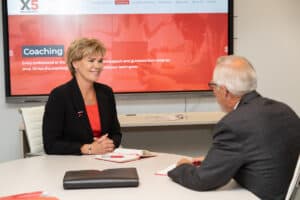Look around you – the workforce has changed in recent years. Now there are as many as five generations of people working together at any given workplace. And “working together” doesn’t necessarily mean everyone is successfully collaborating and capitalizing on each other’s strengths. Without bridging the generational gap in the workplace, these differences are even more profound.
The truth is, so many different people with distinctive backgrounds working in the same work environment can be very stressful. Sometimes, it can be the source of conflict. Each generation interacts with authority, organization, and colleagues in different ways. Not to mention, they have varying work and management styles.
Bridging the Generational Gap in the Workplace
So, whether you’re a leader or not, Traditionalist, Baby Boomer, Gen X, Millennial, Gen Z, or the or the up-and-coming Gen Alpha listen up! These tips apply regardless of the generation you associate yourself with.
Here are four key pointers to help bridge the generational gap in the workplace.
1) Get to know your colleagues on a personal level
This seems like a no-brainer. But it is worth a healthy reminder as we’re all likely guilty of being too busy to take the time and get to know one another.
It’s natural to gravitate towards people you have things in common with, including your age group. Regardless, if you’re 25 or 65, getting to know your co-workers will benefit you in the long run. A friendly conversation about family or personal interests can bode well in establishing relationships and seeing each other in a different light. Spend a few extra minutes with those you don’t know well to gain some perspective on where they’re from, their background and what they like to do.
You never know what you’ll learn, and even a few personal details helps us better understand one another. According to Patrick Lencioni (The Five Behaviors of a Cohesive Team® model author), knowing some personal history can build a foundation of trust, since we tend to trust others more easily when we know something about them.
2) Knowledge is power
More experienced employees have a wealth of knowledge that would benefit more youthful employees if transferred and shared. That wealth of knowledge, however, can be shared from younger to older keeping in mind many young employees are more likely to embrace change and areas such as new technology. Traditional mentoring, reverse mentoring, and peer to peer mentoring will benefit the entire organization.
It’s a shame many people retire and walk away with vast amounts of information about an organization and/or technical knowledge. As a leader, it is important to establish mentorship and knowledge transfer programs that recognize the experience your senior tenured employees have, as well as offer new employees the opportunity to soak in the wealth of experience to successfully do their jobs moving forward.
When there is mutual benefit for both employees, there is a greater opportunity for successful collaboration. Retirement does not typically sneak up on someone, and an organization would be wise to implement a succession planning program that identifies future leaders years in advance to allow the time necessary to cultivate expertise. Good succession planning makes an excellent retention strategy as well.
3) Understand each other’s motives, needs and working styles
Every person will have different reasons for choosing a career and a specific role. They will also have particular motives for what they would like to get out of their work each day (i.e. money, altruism, work-life balance, experience, professional challenge etc.). Sometimes it begins as a “job” but typically we excel in areas that interest us and when we reflect, we realize we have pursued a particular area of interest without even realizing it.
Each generation and each person is different and offers diverse working styles. Survey your team to understand each employee’s motives and build your internal strategic direction, succession planning, and the associated rewards around these employee motivations. The key here is to have effective communication strategies that encourage positive sharing.
Share the information within your workplace. This showcases that every employee is different. It also helps with bridging the generational gap. Team members may work and get motivation in varying ways, bringing diverse needs to the table.
4) Capitalize on each other’s strengths
Regardless of the generation you are associated with, every person in your office brings them particular strengths. They have different abilities and skills that differentiate them from their colleagues.
(Did you know? The strengths within your team can be found by discovering their Workplace Personality.)
What’s the key to ensuring the age and generation gap does not become a major work obstacle? Ensuring every employee’s strengths are effectively capitalized on and shared within the group. As a leader, it is important to get to know your employees and nurture their abilities, support their professional growth, and harness their creativity to improve the workplace. Strengths should be viewed as beneficial for all concerned and not as threats to other employees.
As a leader, it becomes more and more challenging to manage a diverse workplace. Especially with generations, ethnicity, gender, and many other differences becoming more prevalent. But diversity brings opportunity and opportunity brings success.
Harness your diversity and capitalize on the unique opportunities it offers your workplace! This includes bridging the generational gap in the workplace and reaping the rewards.
In Conclusion
According to Brendan Shaw, in recent years is the first time in history that as many generations have been working together under one roof. As some Traditionalists continue to work, Generation Z enters the workforce. This can create some rich and stimulating environments as generations learn from each other, and respect that each generation places difference priorities in different areas.
Employers would be well served by ensuring hiring practices includes multiple generations. While on the topic of diversity, leadership in organizations should also consider their strategies on inclusion and equity to sustain the culture and work environment for today’s changing workforce.




